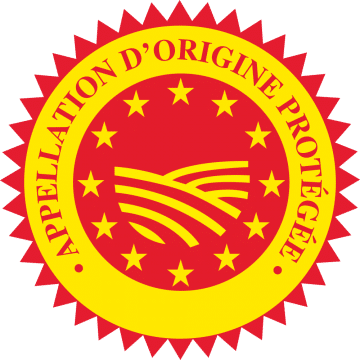PDO Cheeses: What Are the Main French Cheeses ?
Immerse yourself in the delicious world of AOP cheeses, true treasures of France's gastronomic heritage.
Immerse yourself in the delicious world of AOP cheeses, true treasures of France's gastronomic heritage.
Through our selection of label cheeses, discover what the three letters AOP (Appellation d’Origine Protégée) stand for, and what they guarantee in terms of quality, expertise and authenticity. From Comté and Roquefort to Saint-Nectaire and Époisses, take a gourmet journey to the heart of France’s terroirs.
Are you looking for information on PDO cheeses ? You’ve come to the right place. With 3 PDO cheeses in our range, we are about to unveil the secrets behind the three letters that make all the difference: PDO. Join us in discovering these certified treasures that are the pride of our gastronomic heritage and a real treat for our taste buds ! Let’s get started.
PDO is perhaps the most famous acronym of the French terroir. Let’s not prolong the suspense any longer: it stands for Protected Designation of Origin.
The Appellation d’Origine Protégée guarantees that a product is entirely produced in its region of origin, in compliance with the PDO requirements and following traditional methods that preserve its authenticity. This European certification ensures that the product’s name is protected across the EU.
Remember: a PDO is above all a label that guarantees a special bond between the product and its terroir.
A PDO product is identifiable by its emblematic red and yellow logo. In short, PDO means an official logo—a guaranteed sign of confidence.
💡 Germain Enlightens You
The Ministry of Agriculture and Food Sovereignty relies on the National Institute of Origin and Quality (INAO) to oversee the system of official signs of quality and origin. It accredits and evaluates the independent organizations responsible for ensuring compliance with the specifications.

These three letters guarantee that the cheese has been made in a specific region, using traditional methods and local ingredients (the raw materials must come from the defined geographical area). In other words, it is the assurance of an authentic product with a unique flavor that reflects the full character of its terroir. Long live PDO!
And if you’ve noticed the PDO label, you have surely seen the other Official Signs of Identification of Quality and Origin (SIQO): AOC and PGI.
So, what’s the difference ? The AOC (Appellation d’Origine Contrôlée) is the French version of PDO—or, if you prefer, PDO is the European equivalent of AOC. More precisely, the Appellation d’Origine Contrôlée guarantees the protection of its name within France, pending its registration and recognition at the European level.
As for PGI (Protected Geographical Indication), it also guarantees a link to quality and a specific territory, but with somewhat more flexible criteria than PDO. For example, to obtain this label, only one of the stages—production, processing, or manufacturing—needs to take place within the defined geographical area.
💡 Germain Enlightens You
PDO and PGI represent a common good and therefore cannot be held exclusively by economic actors, unlike a brand, for instance. Thus, any operator located within the defined geographical area who meets the specifications for a PDO or PGI can benefit from them.
Obtaining a PDO is a bit like earning a Michelin star… but for a cheese. According to the official INAO guide, obtaining a PDO relies on two key steps. One must adhere to an extremely strict set of specifications (presented just below) and, above all, submit a request for PDO recognition. It makes sense—if you don’t ask, you won’t get it.
For a product to obtain a PDO, an application must be submitted to the local INAO services. This application includes several essential elements:
The specifications document is a key element in the recognition of a PDO. It must include several sections:
Once the application is complete and validated, the INAO and the European Commission review the request before officially granting the PDO label. Once approved, the product can proudly display the red and yellow PDO logo !
The suspense is unbearable… And the big winner is… Comté ! This characterful cheese, aged for many months in humid cellars, captivates the taste buds of the French like no other.
With sales exceeding 60,000 tonnes in 2022, it firmly tops the rankings.
France, the country of cheese by excellence, continues to uphold its dairy heritage with no fewer than 46 PDO cheeses in 2025 !
A few stats to impress at your next dinner party:
Some regions are true strongholds for PDO cheeses ! Here is the Top 3:
From Savoyard alpine pastures to the Aveyron plateaus, each region has developed its specialties, reflecting the diversity of our terroirs. Discover this gastronomic wealth through our tour of France’s PDO cheeses:
New PDO requests are ubmitted all the time, so who knows—perhaps the list will grow even more in the years to come ?
Source: Ministry of Agriculture – Les Fromages AOP: Le Savoir-Faire des Terroirs
This distinction is not merely a simple red and yellow logo—it tells the story of a terroir, of ancestral know-how, and of uncompromising quality standards. With over 200,000 tonnes marketed in 2023 and trust granted by 80% of the French, these 46 cheese masterpieces demonstrate the vitality of a sector deeply rooted in our terroirs.